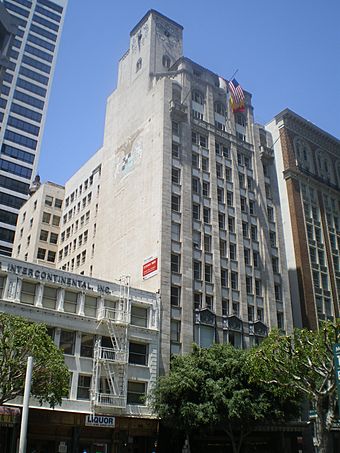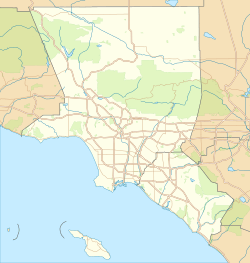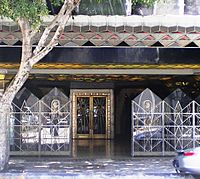James Oviatt Building facts for kids
The James Oviatt Building, often called The Oviatt Building, is a famous Art Deco skyscraper in Downtown Los Angeles. You can find it at 617 S. Olive Street, near Pershing Square. This building is very important because it was added to the National Register of Historic Places in 1983. It is also known as a Los Angeles Historic-Cultural Monument.
Contents
Building History
The building is named after James Zera Oviatt, who was born in Utah in 1888. In 1909, James Oviatt moved from Salt Lake City to Los Angeles. He started working as a window dresser at a department store called C.C. Desmond's.
Starting a Business
In 1912, James Oviatt teamed up with Frank Baird Alexander, who sold hats. They started their own men's clothing store called Alexander & Oviatt. Their first store was located at 209 West Fourth Street in downtown Los Angeles. They also had a business partner named Frank Shaver Allen.
European Inspiration
James Oviatt often traveled to Europe during the summers to find stylish clothes for his growing store in Los Angeles. In the 1920s, he discovered the Art Deco style in France. He loved this new architectural design so much that he decided to use it for his own building. This style would shape the inside of his 1928 James Oviatt Building and even his penthouse apartment.
Designing the Oviatt Building
The Oviatt Building was designed by a well-known Los Angeles architecture firm called Walker & Eisen. Construction on the building began in August 1927. It was finished quickly, in May 1928.
The building was filled with amazing features from Europe. These included a huge 12-ton glass cornice that lit up and a glass ceiling in the arcade. These glass pieces were made by architect Ferdinand Chanut and glassmaker Gaëtan Jeannin.
Special Features
Many parts of the building were designed by the famous artist René Lalique. He created the beautiful molded glass panels for the elevator doors. He also designed the front and side doors, the chandeliers, and a large panel clock.
The building also imported tons of special 'Napoleon' marble from France. A very large, three-faced tower clock with chimes was also brought in. This clock was made by a pioneering electric clockmaker from France, Ateliers Brillié Frères.
See also
 In Spanish: James Oviatt Building para niños
In Spanish: James Oviatt Building para niños






